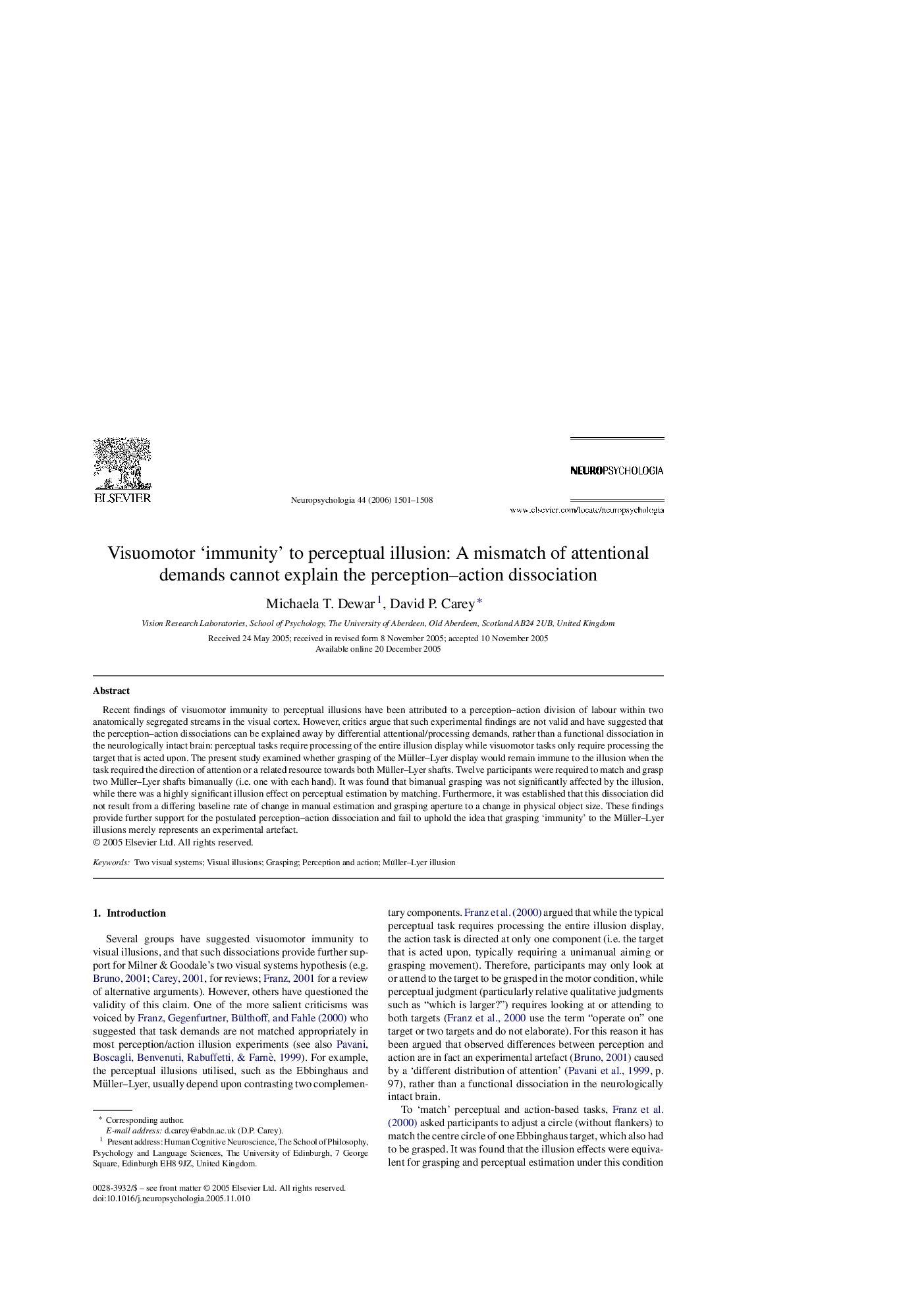| Article ID | Journal | Published Year | Pages | File Type |
|---|---|---|---|---|
| 945811 | Neuropsychologia | 2006 | 8 Pages |
Recent findings of visuomotor immunity to perceptual illusions have been attributed to a perception–action division of labour within two anatomically segregated streams in the visual cortex. However, critics argue that such experimental findings are not valid and have suggested that the perception–action dissociations can be explained away by differential attentional/processing demands, rather than a functional dissociation in the neurologically intact brain: perceptual tasks require processing of the entire illusion display while visuomotor tasks only require processing the target that is acted upon. The present study examined whether grasping of the Müller–Lyer display would remain immune to the illusion when the task required the direction of attention or a related resource towards both Müller–Lyer shafts. Twelve participants were required to match and grasp two Müller–Lyer shafts bimanually (i.e. one with each hand). It was found that bimanual grasping was not significantly affected by the illusion, while there was a highly significant illusion effect on perceptual estimation by matching. Furthermore, it was established that this dissociation did not result from a differing baseline rate of change in manual estimation and grasping aperture to a change in physical object size. These findings provide further support for the postulated perception–action dissociation and fail to uphold the idea that grasping ‘immunity’ to the Müller–Lyer illusions merely represents an experimental artefact.
